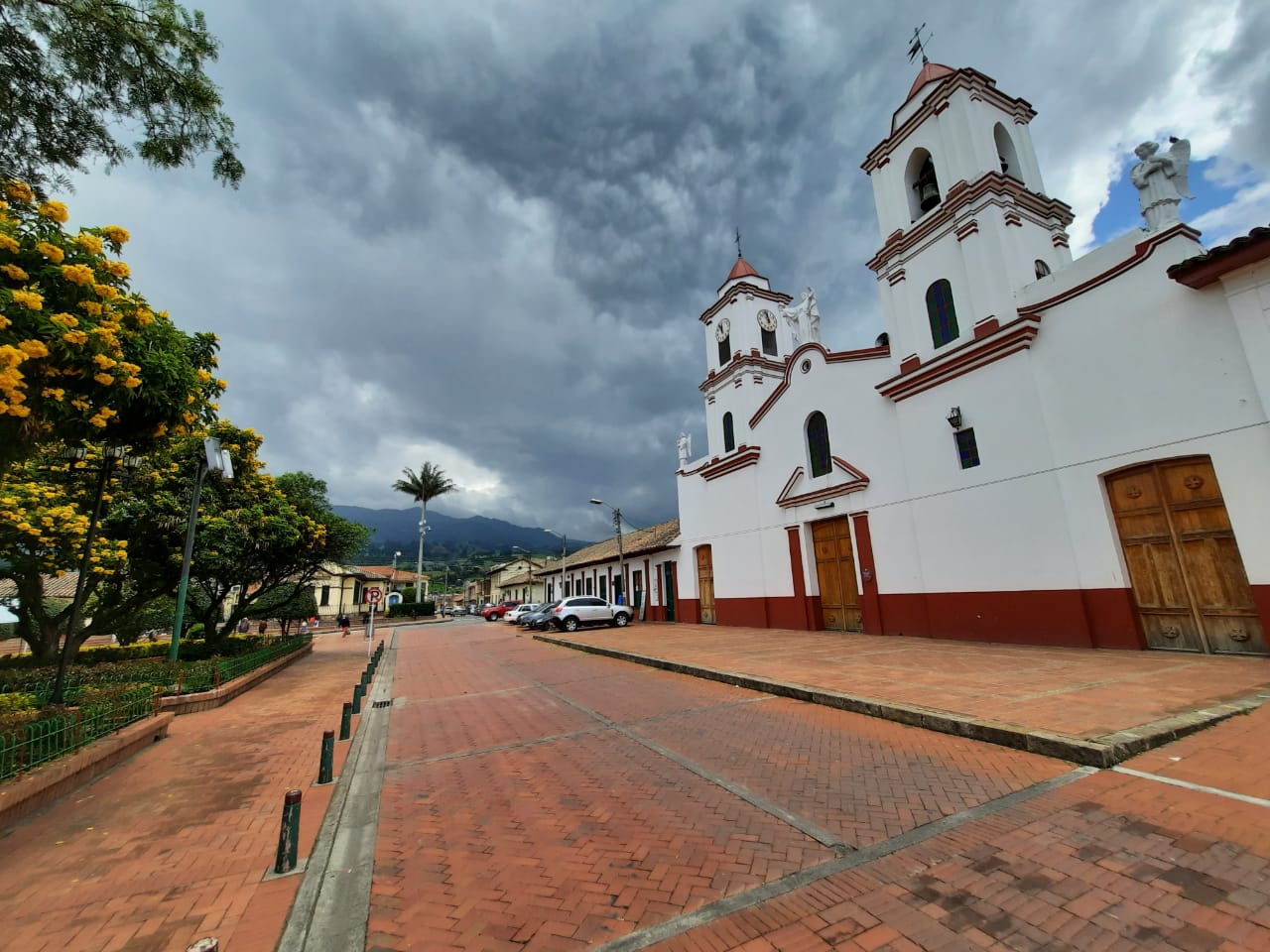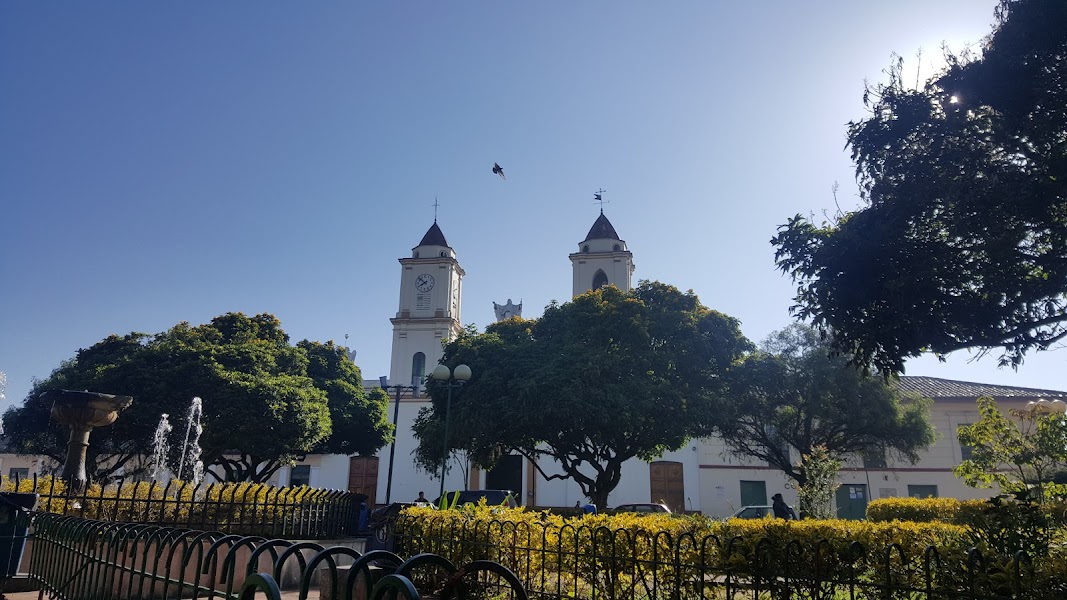Es una construcción de estilo barroco, consta de tres naves, y dos torres laterales, sobre una de ellas reposa el reloj y la otra es el campanario, en su altar mayor lleva el escudo de Colombia, venera al patrono de los Coguanos, San Antonio de Padua.
La Iglesia de San Antonio de Padua se originó en 1604 con la fundación del pueblo, su construcción se contrató en la ciudad de Santafé mediante escritura de 22 de abril de 1605 con el albañil Domingo Pérez, para iniciar el proceso de evangelización de los indígenas que habitaban allí. En 1767 el fiscal Francisco Antonio Moreno y Escandón pidió la reparación de la iglesia de Cogua luego de ver su estado ruinoso, y atendiendo la solicitud de Don José Sutaneme, los vecinos contrataron al alarife Juan Pinto para repararla, proceso que tardó nueve meses. Luego, en 1777, se solicitó el cierre de la iglesia por el bajo número de habitantes en el pueblo, pero los habitantes se opusieron y no se efectuó. Ya en 1779, la iglesia fue aprobada por Decreto del Virrey Manuel Antonio Flórez Maldonado con el nombre de Santísima Trinidad de Cogua; posteriormente tomo su nombre actual.
It is a baroque-style construction, it consists of three naves, and two side towers, on one of them where the clock rests and the other is the bell tower, on its main altar it bears the coat of arms of Colombia, it venerates the patron saint of the Coguanos, San Antonio of Padua. The Church of San Antonio de Padua originated in 1604 with the founding of the town, its construction was contracted in the city of Santafé by deed of April 22, 1605 with the bricklayer Domingo Pérez, to start the process of evangelization of the indigenous people who lived there. In 1767 the prosecutor Francisco Antonio Moreno y Escandón requested the repair of the church of Cogua after seeing its dilapidated state, and following the request of Don José Sutaneme, the neighbors hired the builder Juan Pinto to repair it, a process that took nine months. Then, in 1777, the closure of the church was requested due to the low number of inhabitants in the town, but the inhabitants opposed it and it was not carried out. Already in 1779, the church was approved by Decree of the Viceroy Manuel Antonio Flórez Maldonado with the name of Santísima Trinidad de Cogua; later it took its current name.





